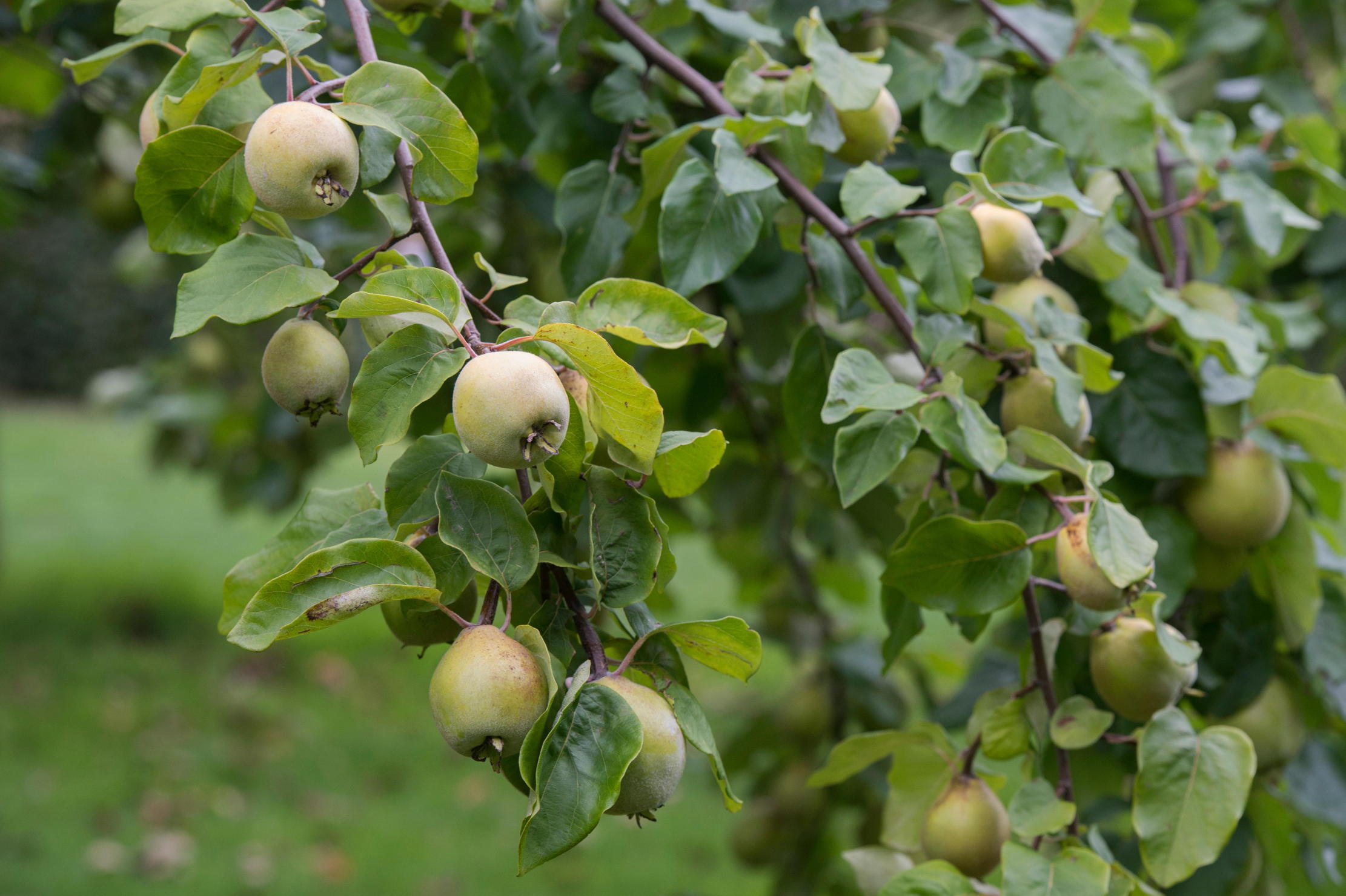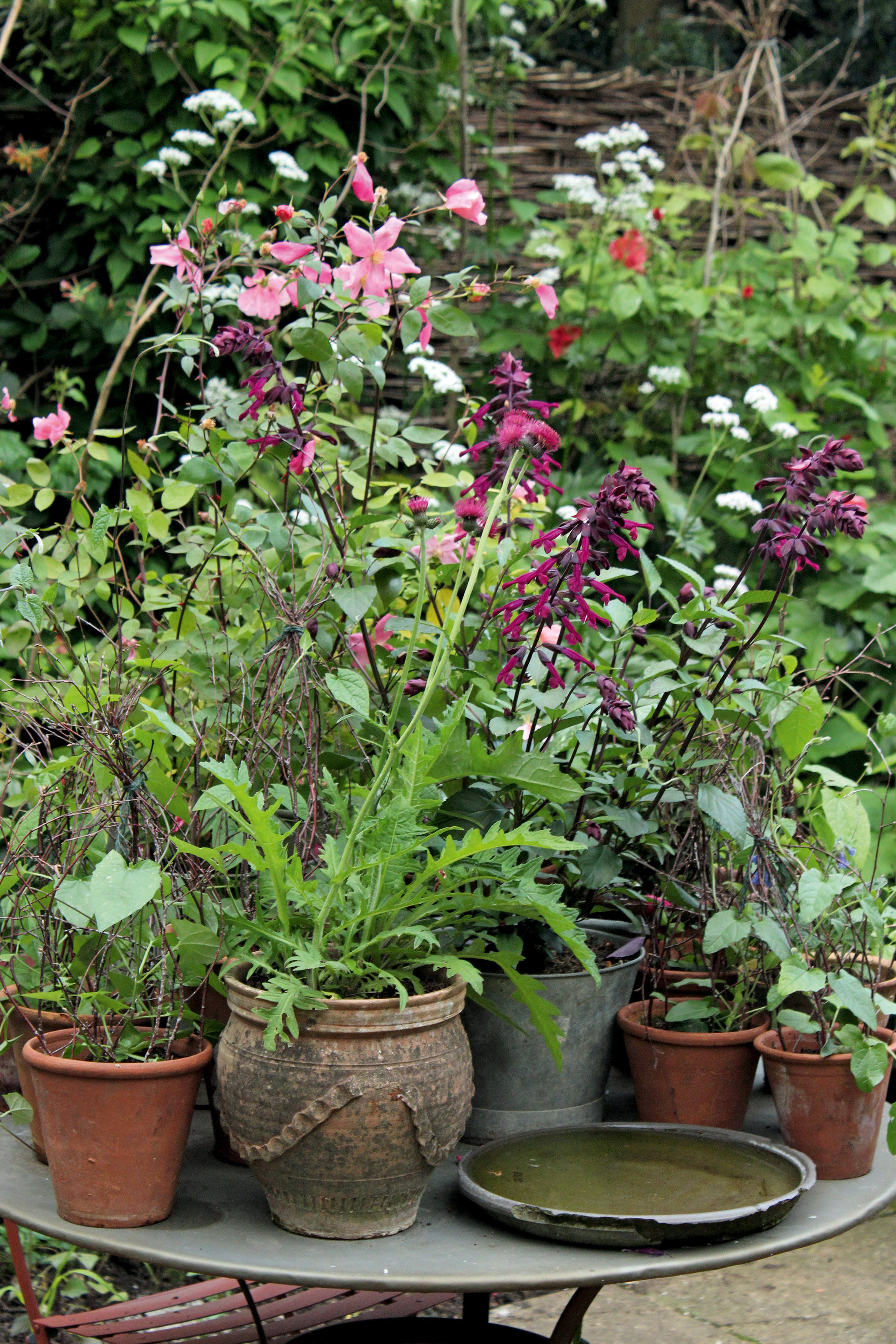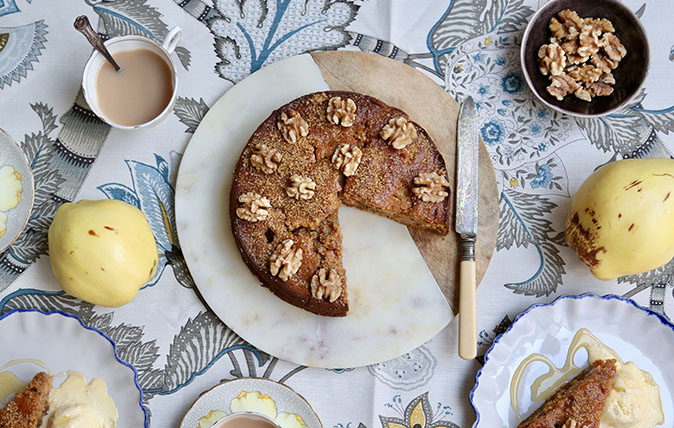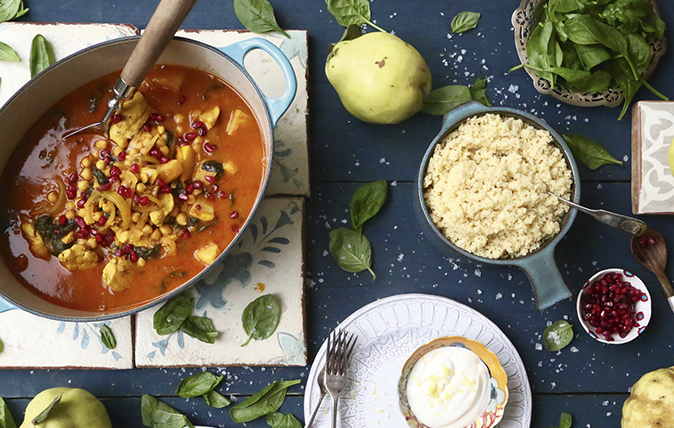The beautiful perfumed fruit that's easy to grow, needs almost no attention, and makes a magnificent Christmas liqueur
Easy to manage and extremely versatile to use, quinces should be a staple in any garden says our grow-your-own expert Mark Diacono.


Perhaps 20 years ago, I met my first Japanese quince. Dragged somewhat reluctantly to Knightshayes — a National Trust house and gardens in Devon, a hop and a skip from the M5 — I discovered a superb walled garden and an excellent cream tea. Enjoying the latter in a sunny seat against the house, I caught an arm on something spiky. My wife assured me that Chaenomeles japonica, also known as the Japanese or Oriental quince, was the culprit.
Swearing over, I noticed its thorny branches were dotted with lime/yellow fruit that surrendered not even a little to a squeeze, but they did give my fingers the most glorious perfume. Two weeks later, I had planted a couple and they have been ever-present in my life since then.
Unlike the familiar tree quince (Cydonia oblonga), Japanese quince generally grow low and wide — to perhaps 5ft by 6ft — flowering prolifically from mid-winter through spring as new leaves begin to emerge, often when still carrying the previous year’s fruit among the spikes. As with Cydonia quince, the fruit are as hard as a hammer, albeit smaller and often rounder than Cydonia’s pear-shaped fruit. Happily their perfume is of a similar spicy fruitiness, with some of that wondrous sherbettyness that walnut leaves carry. It’s impossible not to lift them to your nose to breathe it in.
At first, I thought of Japanese quince as an excellent alternative to Cydonia quince, largely for anyone with too little space for a quince tree, but the years have convinced me that they deserve their own billing, distinct as they are, for even a large garden. As well as the subtle difference in flavour and scent, Cydonia quince are perhaps the definition of autumnal fruit. Chaenomeles, on the other hand, can be ready to pick in late summer and will hang on to the bush until new year. That they can flower in the coldest months, bringing a little welcome cheer, makes me love them even more.
Happily, they are easy to grow and require little of your practical attention. Tolerant of most soils and semi-shade, in my 20 years’ experience they are disease and pest free, their flowers are resistant to all but the harshest cold and they need minimal pruning.
Pruning is largely about developing and maintaining a good shape, taking dead and crossing branches back to the base or main stem, removing perhaps one-quarter of the oldest stems to keep the plant healthy and uncluttered. It’s best to prune them soon after flowering, as flowering occurs on the previous year’s growth and pruning then allows the plant time to produce new growth before the next flowering season.
Although Japanese quince are happy to grow as a freestanding shrub, they can be encouraged to resemble a small tree of perhaps 8ft in height — there is a glorious specimen overhanging the garden wall that cheers my morning dog walk — and I have seen them both espaliered and fan-trained, which they took to productively.
Exquisite houses, the beauty of Nature, and how to get the most from your life, straight to your inbox.
Grown commonly as an ornamental plant, varieties are bred mainly for their visual characteristics and, in my experience, are as productive as each other: ‘Jet Trail’, ‘Salmon Horizon’ and ‘Crimson and Gold’ are all beautiful and productive. You only need one, as they are self-fertile.
The fruit can be picked at any time once they have reached maturity; you can tell by the scent, their plumpness and from a touch of rosiness to the fruits. Pick them as you need them, as, although they keep well off the plant, they are perfectly happy to cling to the branch into winter and often into new year. Once the fruits start to fall to the ground in numbers, pick the rest immediately.
As with the Cydonia quince, Japanese quince fruit require a little sweetness to make the most of their flavour. They don’t bake as well as Cydonia quince, but, made into drinks, their aromatic sourness is so good and they produce one of the greatest jellies. At the tail of summer, finely grate the fruit into water with a touch of lemon to prevent discolouring and add a little balancing sugar for a wonderfully refreshing summer drink.
For special Christmas presents, to yourself if you are wise, grate about 10 fruits into a large jar of vodka or gin and sweeten with an inch of sugar; allow a couple of months for them to infuse and the resulting liqueur will make winter seem just fine.

The Hampshire house and garden where D-Day was planned is now a haven with sun-drenched views across calm azure sea to the Isle of Wight
Once the haunt of smugglers and sailors, the Hampshire seashore now shelters a garden where pre- and interwar plantings sit

Arthur Parkinson: Why I spent hours among the headstones at the local churchyard with my bucket and spade
'Quite potty perhaps,' admits the brilliant Arthur Parkinson, 'but well worth it.'

Credit: Mike Harrington via Getty Images
Leave the cellophane-wrapped lettuce at the supermarket. It's time to grow your own
Alan Titchmarsh takes us for a tour around his vegetable garden.

Inside the garden of Eton: A rare glimpse into the grounds of the world's most famous school
The gardens of Eton College in Windsor, Berkshire, date back to a request from its founder, King Henry VI. Over

Recipe: Quince, walnut and honey cake, perfect for afternoon tea
Knobbly quince is a delicately fragrant fruit that fills the kitchen with the most incredible aroma, says Melanie Johnson.

Chicken, quince and pomegranate tagine with couscous
Fragrant pomegranate and quince add a taste of the Middle East to this delicious chicken dish.
Mark is lucky enough to spend most of his time eating, growing, writing and talking about food. He has written fourteen award-winning books, including A Year at Otter Farm and A Taste of the Unexpected (both won Food Book of the Year, and Garden Book of the Year). Known for growing everything from Szechuan pepper to pecans to Asian pears, Mark's refreshing approach to growing and eating has done much to inspire a new generation to grow some of what they eat. He was involved in the early days of River Cottage, appearing in the TV series, and writing four River Cottage books. Mark writes to a global audience on his best-selling Substack: Mark Diacono’s Abundance.
